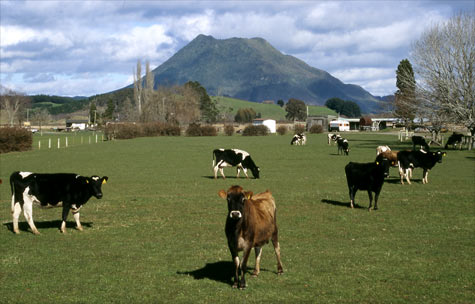 New Zealand dairy producers are being squeezed by low milk prices, and as a result they are culling their herds during the off-season to bring in much needed cash. While painful for producers Down Under, the plight of New Zealand dariy producers could serve to tighten global markets in time.
New Zealand dairy producers are being squeezed by low milk prices, and as a result they are culling their herds during the off-season to bring in much needed cash. While painful for producers Down Under, the plight of New Zealand dariy producers could serve to tighten global markets in time.
“The prospect of a second low payout season is weighing on New Zealand dairy producers,” says Sara Dorland, analsyt with the Daily Dairy Report and managing partner at Ceres Dairy Risk Management, Seattle. “Low prices are also likely impacting New Zealand producers’ near-term decision making.”
Historically, Dorland notes that New Zealand dairy producers increase culling at the end of the season with slaughter typically peaking in April and May of each year. The pattern for the 2014-15 was similar to past years, but the level of culling at the start of the 2015-16 season is far higher than the five-year average rate, notes Dorland.
“When faced with short-term cash needs and low milk price forecasts, some New Zealand dairy producers being forced to make the tough decision,” she says.
In June, New Zealand heifer and cow slaughter was 3.1 percent higher than the prior season at 136,449 head, according to New Zealand Statistics. Weekly data for July, however, shows that New Zealand heifer and cow slaughter although lower at 84,941 head was 24 percent higher than the same period a year ago.
“Producers are actively reviewing their dairy herds and sending low-producing cows to slaughter to mitigate costs and provide a near-term injection of cash,” says Dorland.
Early in the 2014-15 season, Fonterra’s milk price projections for the full season started at $6/kilograms of milk solids (NZ$/kgms), and early season advanced milk payments were based on these preliminary forecasts, she notes.
As the season unfolded, however, the milk price forecast deteriorated, says Dorland. With Fonterra’s full-season final milk price payout at $4.40/kgms, it is probable that final milk checks were inadequate to cover costs.
“Most of the funds were dispersed earlier in the season, possibly leaving many dairy producers cash-strapped headed into winter, which begins in June in the Southern Hemisphere,” says Dorland. “Short of liquidation, dairy producers’ ability to generate cash during a down cycle in New Zealand is limited.”
One of the ways producers can increase cash flow is to cut variable costs. But in New Zealand, Dorland notes that variable costs are somewhat limited, and thus offer little relief to cash-strapped producers who can scale back.
“As a result, dairy producers turned to the largest short-term cash pool they have—the beef value of their dairy herds,” she says. “Culling dairy cows to generate near-term cash is a dubious decision to say the least.”
Because dairy producers are in the business of milking cows, scaling back on the number of cows they milk runs contrary to overall long-term business objectives.
“If milk prices remain low and culling continues heavy in New Zealand, a milk production shortfall from Oceania could speed up a global recovery in milk and dairy product prices,” says Dorland. “That said, recovery will still take time, given the large stocks of dairy products, particularly in China and the European Union.
To subscribe to the Daily Dairy Report, go to www.dailydairyreport.com and click on Register.
Source: Agweb











